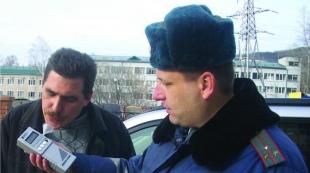Mkuk "Middle Akhtuba inter-settlement central library". Mkuk "Middle Akhtuba inter-settlement central library" Description Viewing a book exhibition for the Battle of Stalingrad
17.07.2017
July 17, 2017 marks the 75th anniversary of the beginning of the Battle of Stalingrad - the most grandiose battle of the Great Patriotic and World War II, which marked the beginning of a radical change in the course of these military campaigns in favor of the Soviet Union and the countries of the anti-Hitler coalition. This battle was the longest in the history of the Great Patriotic War and lasted a total of 6.5 months.
By this date in the lobby branch library №2 prepared for readers exhibition-requiem "Stalingrad will become the glory of centuries".
 The exhibition presents books that tell about the very events that took place in the dilapidated Stalingrad in 1942-1943, in which the reader will find interesting materials telling about how the defeat of the Nazi armies on the Volga was prepared and carried out, how this greatest in the world the history of the battle, as well as the heroism and courage of the Soviet people, who did everything impossible so that the Battle of Stalingrad became the beginning of the Great Victory of the Soviet people both in the Great Patriotic War and in World War II as a whole.
The exhibition presents books that tell about the very events that took place in the dilapidated Stalingrad in 1942-1943, in which the reader will find interesting materials telling about how the defeat of the Nazi armies on the Volga was prepared and carried out, how this greatest in the world the history of the battle, as well as the heroism and courage of the Soviet people, who did everything impossible so that the Battle of Stalingrad became the beginning of the Great Victory of the Soviet people both in the Great Patriotic War and in World War II as a whole.
 Readers are presented with documentary and archival materials containing the memoirs of Soviet military leaders G.K. Zhukova, A.M. Vasilevsky, K.K. Rokossovsky and other participants in the battle in the book "Stalingrad: the lessons of history", Lubchenkova Yu.N. "100 great battles of World War II", Suldina A.V. "Battle of Stalingrad. A complete chronicle - 200 days and nights”, as well as works of art by eyewitnesses of those events: V. Nekrasov “In the trenches of Stalingrad”, Y. Bandarev “Hot snow”, V.S. Grossman Life and Fate.
Readers are presented with documentary and archival materials containing the memoirs of Soviet military leaders G.K. Zhukova, A.M. Vasilevsky, K.K. Rokossovsky and other participants in the battle in the book "Stalingrad: the lessons of history", Lubchenkova Yu.N. "100 great battles of World War II", Suldina A.V. "Battle of Stalingrad. A complete chronicle - 200 days and nights”, as well as works of art by eyewitnesses of those events: V. Nekrasov “In the trenches of Stalingrad”, Y. Bandarev “Hot snow”, V.S. Grossman Life and Fate.
 The booklet "The Battle of Stalingrad: Facts and Figures" prepared by the librarian I. A. Ignatova serves as an addition to the exhibition.
The booklet "The Battle of Stalingrad: Facts and Figures" prepared by the librarian I. A. Ignatova serves as an addition to the exhibition.


February 2 is the day of military glory of Russia. 75 years ago, Soviet troops defeated the troops of the Nazi invaders in the Battle of Stalingrad. Meetings prepared by library staff were dedicated to this date.
Shilo-Golitsyn Rural Library together with the Rural House of Culture held a literary and musical lounge for high school students "There is silence on Mamayev Kurgan ..."
Against the background of the presentation, the presenters spoke about the historical place - Mamaev Kurgan and its role in the victory of the Great Patriotic War, about the participants in the Battle of Stalingrad, the defenders of the city of Volgograd and about the history of the founding of the monument-ensemble "Heroes of the Battle of Stalingrad". During the event, audio recordings of songs performed by the Volga choir “There is silence on Mamaev Kurgan ...”, “In the park near Mamaev Kurgan”, “A birch grows in Volgograd” performed by L. Zykina were performed.
A book sale was arranged for the participants of the event "Stalingrad epic".
Millions of people annually rise to the top of Mamaev Kurgan. Remembering the past, they think about the future. And the voice of history, like a testament of the fallen, conveys to the new generation a simple and clear truth - a person is born for life. Centuries will pass, and the unfading glory of the defenders of Stalingrad will live forever in the memory of the people.
At the end of the event, a minute of silence honored the memory of the dead.
Courage Lesson “Stalingrad: 200 days of courage” was held in the Rtishchevo rural library. Students in grades 6-7 got acquainted with the history of the Battle of Stalingrad, which marked the beginning of a radical change in the course of the Great Patriotic War. The children learned about the steadfastness, courage and heroism of the defenders of Stalingrad, as well as about the huge contribution of the military art of the commanders in chief of the fronts. Children read poems about hero cities, about Stalingrad. At the end of the event, the children were offered to watch a presentation about the Battle of Stalingrad. The event ended with a review of the book exhibition "Cities of Russian Glory".
A lesson in courage for a wide range of readers was held in the Makarov rural library "Pain and Glory for Ages" . The event was dedicated to the day of the liberation of Leningrad from the fascist blockade and the 75th anniversary of the Battle of Stalingrad. A book exhibition was arranged for the lesson of courage, which aroused interest among both adults and children. The children listened with great interest to the librarian, examined the photographs and exhibits presented at the exhibition, adult readers recalled their grandfathers and great-grandfathers who fought on different fronts of the great war.
City Library No. 2 Conducted Courage Lessons "Stand and forget about death" and "You are in our heart, Stalingrad" for high school students, secondary school No. 5 and secondary school No. 9. The library staff spoke about the cost of the victory of the Soviet army, how many trials fell on the residents and defenders of the city. The exploits of Mikhail Panikakha, Yakov Pavlov, Matvey Putilov, Marionela Koroleva, Maria Kukharskaya and other defenders of the city left an indelible impression in the memory of the children. The students also learned about Mamaev Kurgan and its significance in the battle for Stalingrad. Poems dedicated to the hero-city Stalingrad were sounded at the event.
There is an exhibition for adults throughout the year “Remember. We store. We value " dedicated to the days of military glory of Russia.
City Library No. 3 held an hour of courage "Two hundred fiery days and nights" for students of grades 8, 9 of secondary school No. 7. The children were shown a film where they saw footage of peaceful life, a pre-war city with its large industrial plants, beautiful buildings and monuments. Then the chronicles of the battles for every house, for every inch of land, saw a victorious banner over the Mamaev Kurgan, charred from fierce battles. We remembered the heroes of the battle and found out what price our people paid for this victory. As a result of fierce battles and bombardments, the city turned into ruins, but the most tragic were human destinies and losses. The event ended with a minute of silence in memory of all the victims.
Video tour "Volgograd. Mamaev kurgan" was organized for 7th grade students of secondary school No. 7. On a virtual road, the children walked along the Alley of pyramidal poplars to the “Stand to the death” square, along the “Walls-Ruins” composition to the “Heroes' Square”. We visited the Hall of Military Glory and from the "Sorrow Square" climbed to the top of Mamaev Kurgan to the main monument - "Motherland!".
An hour of history was held in the Krasnozvezdinskaya Library “The symbol of courage and resilience is the great city of Stalingrad!” .
A story was prepared for readers about the difficulties of the war, about the importance of the Battle of Stalingrad for the course of the entire Great Patriotic War. Those present learned about the military operations of the Soviet troops in the defense of the city and the defeat of a large strategic German grouping.
The article was also read for those present “They fought for Stalingrad”- about the heroes of the legendary battle. At the end of the event, the librarian recommended Y. Bondarev's book for reading "Hot Snow", tells about the events of the disturbing winter of 1942.
An employee of the Slantsy rural library for middle school students held an hour of history “Glory to you, Stalingrad!” During the event, the children were told about the valor and courage of the soldiers of the Soviet army, the losses of the personnel of the Soviet army, as well as the significance of the battle in the history of the Great Patriotic War.
On the occasion of the 75th anniversary of the defeat of the Nazi troops in the Battle of Stalingrad, the Lopatin Library together with the school held a lesson in courage “We must not forget those years when the Volga water boiled” . Readers learned about the battle, the likes of which history did not know, about the heroism and stamina of the Soviet soldier, about the huge losses, both from our army and from the enemy. Children read poems by Gudzenko, Surkov, Orlov and others. The Lopatin Library also has an exhibition "Stalingrad - the blazing address of war."
Battle of Stalingrad is the greatest battle of the Second World War. Stalingrad is a hero city, a city of courageous and courageous people who once said: “There is no land for us beyond the Volga!” and won the victory. And the memory of the battle will remain in the hearts of people forever.
February 3 in the central city library of the city opened exhibition-review "The best reward for us is the city of Stalingrad you saved" dedicated to this significant event.
The exhibition featured books telling about the very events that took place in the dilapidated Stalingrad in 1942-1943. On the shelves you could see both old and completely new editions. For example, the book published in 2014 “The Great Patriotic War without the stamp of secrecy. Book of Losses" talks about the total losses of the people and military equipment for each period, for each front and for all individual armies. The authors cite many tables in the book and use documents from various archival institutions of the former USSR that were previously closed for publication. This book is a unique modern publication that has no analogues in military historical literature.



Also, there were presented books-evidence of the participants in the battle on the Volga and, of course, a book about the Altai heroes "The battle path of the 315 Melitopol Red Banner Rifle Division". In it you can find a lot of useful and interesting information about our countrymen who participated in the Battle of Stalingrad.
At the exhibition it was possible to meet with the history of the street name of the 15th Guards Cavalry Division, which was formed on September 15, 1941.
It is impossible not to mention the now living and the only full holder of the Order of Glory Nikolai Andreevich Chernyshev, which is also written about in one of the books presented at the exhibition.
“The commander took his first baptism of fire near Voronezh, and then there was Stalingrad,” says Svetlana Timofeevna Shmakova, the leading librarian of the central city library named after V. M. Shukshin.
Of course, the exhibition dedicated to the Battle of Stalingrad was not without fiction by famous writers: Simonov "The Living and the Dead", Nekrasov "In the Trenches of Stalingrad", Bondarev "Hot Snow" and others.
Library staff admitted that they would like to see more representatives of the younger generation at the exhibition. After all, everyone should know the history of their country!



Book exhibition and other materials
Dear friends, blog readers!
I bring to your attention plan of a book exhibition-view (with subtitles and quotes - to choose from), as well as interesting informational materials from the collection of reports at the Third Youth Readings "The Battle of Stalingrad in the History of Russia", published by Volgograd State University in 1999.
Quote:
Returning to unforgettable dates,
To the origins of the memory of the earth -
Medal of the Battle of Stalingrad
Our Februarys are smoking...
1. "The battle rumbled over the Volga ..."
Quote
:
Z here in the streets and squares battle rumbles;
Hot blood mixed with the Volga water;
The young city turned black in the smoke of fires.
The danger has never been greater.
And the battle of these days decides the fate of the world.
Quote:
« Was the battlefield of STALINGRAD,
In his hands is the fate of the Fatherland!
The soldier said to the soldier:
"We have nowhere to go back,
There is no life beyond the Volga for us!”
Quote:
Towering like a stronghold over the Volga,
In the ring of impregnable fences,
Announces a glorious victory
In thunder and smoke STALINGRAD.
Stubborn in the fight, majestic,
In the ring of impregnable fences,
Near the Volga on fire and fires
Stalingrad forged the victory.
Quote:
"Don't cry, wife. Dry your tears, son.
I am bold in heart and stand in the battle,
I'm going into battle for Russian birches,
For Stalingrad, for the Volga, for the family!”
Quote:
There was no Stalingrad. But he was!!!
Destroyed, but standing!
Each stone was beaten with a grenade and a bullet,
Every snowdrift fired!
2. "Golden Stars of Stalingrad": heroes and defenders of the city.
Quote:
"Immortal is the one who saved the Fatherland."
Quote
:
"Inscribed on the pages of history with bayonets
The feat of the Russian people, the heroism of Stalingrad.
Quote:
"Never disappear, never fade,
Who was left on his deathbed
Embedded in memory, driven into stone
The names of those who died in the fire.
Quote:
“Like a mother child, solemn and holy,
Keeps the earth soldier's hearts.
They died, the glorious duty of a soldier,
Rejecting death, accomplished to the end.
Quote:
Here the Germans brutalized armada
Rushed to the Volga in the thunder of cannonades,
But on their way again a steel barrier
The courage of cadets and soldiers arose.
They were destroyed by artillery fire and tanks,
And there was no turning back for them.
Everything they could, the soldiers did:
They covered Stalingrad with themselves!
Quote:
And people turned out to be harder
Growing into stones, they bled
But the cities on the Volga were not given
And they saved the honor of their Russia.
G. Shirokova
Quote:
Orders are like blood on the chest of heroes.
Day and night your cannonade did not stop.
In a duel grappled in the heat of battle
Life and death at the ruins of Stalingrad.
3. "Creators of the Stalingrad victory: commanders and commanders."
Quote:
Salute her big and small
Creators who walked the same path,
Her fighters and generals,
Heroes fallen and alive -
To all those who forged the Victory ...
Quote:
Glory to you, brave, glory, immortal!
Eternal glory is sung to you by the people.
Those who lived with valor, crushed death,
Your memory will never die!
4. "Holy Stalingrad land: monuments and obelisks"
Quote:
At the obelisks we stand...
Solemnly the banners are bowed,
Glory to the hearts of descendants.
The great sons are silent in the Earth.
The living youth is silent over them.
M. Lukonin
Quote:
Oh Mamaev Kurgan, you are the top of the peaks,
You have millions, we have you alone.
You remember, February blizzard-blizzard,
How the enemy was driven away from the Volga River ...
Quote:
Let them come here not to pray -
I want to get on my knees...
And with a sword in his raised right hand
Protects peace - tombs
Days and nights Motherland.
L. Zakharova
Quote:
There, on Mamaev Kurgan,
The memorial ascended
He is for posterity for edification
And in memory of those who died.
5. "You are in the memory and in the heart, Stalingrad!": Memoir literature about the battle
Quote:
“And there were days and nights - there were dates,
Dividing us into the dead and the living.
Old soldiers read
Memories of their marshals ...
M. Lukonin
6. “Light a candle for memory”…: New publications about the Battle of Stalingrad inperiodicals.
Quote:
Everything we build today
Paid for by your blood.
Eternal glory to the heroes!
Eternal memory to the fallen!
Quote:
Tears are dust, insults are mortal,
The pain went out like a flame.
Remains the same
Only memory.
Only memory.
A. Danilchenko
7. "Rising from the Ashes": Hero City Volgograd
Quote:
On the ground, wounded, burned,
Pigeons fly in the peaceful sky...
Reborn from ruins and ashes,
A new city has grown - Volgograd!
Z. Smirnova
Quote:
And on earth, sung in songs,
Over the Volga slow water,
The city rose - their age -
Great, bright, young.
M. Agashina
8. "The Muse Called to Victory": Stalingrad in Literature and Art
Quote:
“It has become even more expensive for us these days
Holy Stalingrad land.
M. Agashina.
Quote:
May the battle glory of fellow countrymen live as an unfading star in legends ... "
Quote
:
“The one who was here will never forget it. When, after many years, we begin to remember and our lips pronounce the word "War", then STALINGRAD will rise before our eyes ... "(K. Simonov "Days and Nights")
From the collection of reports "The Battle of Stalingradin the history of Russia"
Volga river flotilla in the battle for Stalingrad
In the history of our country, the Volga has repeatedly witnessed the glorious deeds of our people. In 1942-1943. The Volga flotilla made an invaluable contribution to the victory at Stalingrad.The Volga, the country's most important waterway in terms of freight turnover, replaced more than 10 railway lines. Military operations unfolded on the Volga itself even before the enemy broke through directly to Stalingrad. On the night of July 23-24, 1942 German planes began to mine the fairway of the river. Volga ships began to be fired upon from aircraft and bombed. Mines were dropped near the village of Gorny Balikley, Cherny Yar, Gornaya Proleyka, etc. By the end of July, the Germans had delivered a total of over 200 mines. The Volga became dangerous for navigation for 400 km.
Played a huge role in ensuring navigation Volga Military Flotilla, which was formed by the decision of the State Defense Committee of July 16, 1941 "On the formation of the Training Detachment of the ships of the Volga River." The sharp deterioration of the situation on the main strategic directions of the Soviet-German front in the autumn of 1941 required the formation of the Volga Flotilla to protect the Volga route. By order of October 23, 1941, Admiral of the Navy N.G. Kuznetsova The training unit was reorganized into Volga flotilla. He was appointed commander of the Volga military flotilla Rear Admiral D.D. Rogachev. By the summer of 1942, the Volga temporary flotilla included the 1st brigade of river ships (the division of gunboats Usyskin, Gromov, Rudnev, 12 armored boats, 6 patrol boats, 10 half-gliders, a marine battalion) under the command of counter -Admiral S.M. Vorobiev; 2nd brigade (division of gunboats "Kirov", "Chapaev", division of floating 152-mm batteries No. 97, 98; four armored tankers, a detachment of half-gliders and a battalion of marines), commanded by Rear Admiral G.A. Novikov; a separate brigade of 26 minesweepers, under the command of Rear Admiral B.V. Horoshina.
To carry out the evacuation of Soviet citizens, the property of state farms and collective farms, by decision of the Stalingrad regional committee of July 13, 1942, were created from Kamyshin to the village. Zemyan Astrakhan region 24 crossings. In addition, on August 22, 1942, there were 15 main crossings across the Volga in the Stalingrad region, most of which carried out military transportation. Thus, there were about 40 crossings in total.

Crossing
In the summer of 1942, the enemy approached Stalingrad and cut the railway line Stalingrad-Povorino, interrupting the connection of the city with the center of the country. There was only one way to supply the defenders of the city of Stalingrad with ammunition, people, food, one way to evacuate the wounded and the population - the Volga. She literally became the dear life.
To increase the combat capability of the flotilla, the GKO adopted a resolution on arming river vessels with anti-aircraft guns and machine guns, air defense units were formed under the command of Colonel I.V. Zheltyakov to protect ports and places of congestion of ships from enemy air raids. Until November 1942, the air defense group shot down 20 German aircraft, repelled more than 190 air attacks. Especially distinguished in those days was the tugboat "Socrates" of the shipping company "Volgotanker" under the command of Captain A.I. Kravtsova. The ship was attacked 9 times by enemy aircraft, but the crew of the anti-aircraft gun of junior sergeant S.I. Tsapa then shot down 3 enemy vehicles.
The Volga crossing was an integral part of the front, a link between the front line and the rear.
More than 3.8 million tons of oil products, 280 thousand heads of livestock, more than 3,500 thousand tractors and combines were transported through the crossings. The Stalingrad Front alone received half a million tons of fuel. Thus, the rivermen rendered great assistance not only to the defense of Stalingrad, but also in solving other national economic problems.
In combat operations, the Usyskin gunboats, under the command of Lieutenant Commander I.A., especially distinguished themselves. Kuznetsov, and "Chapaev", under the command of Senior Lieutenant N.I. Voronin. So, for example, the Usyskin gunboat only during the period of hostilities from August 23 to October 23, 1942 destroyed or damaged 19 German tanks, 39 vehicles, 2 six-barreled mortars, 8 guns, dozens of bunkers and dugouts, blew up 3 ammunition depots, set fire to 2 fuel tanks, suppressed 2 batteries, 3 mortars, dispersed up to 30 tanks and 156 enemy vehicles, destroyed hundreds of enemy soldiers and officers. Decree of February 24, 1943 of the Presidium of the USSR Armed Forces gunboats "Chapaev" and "Usyskin" for the exemplary performance of combat missions on the front of the fight against the German invaders were awarded the Order of the Red Banner. The crews of the steamship "Nadezhny" (captain A.Ya. Shvarev), the longboat "Abkhazetz" (captain A.N. Khlynin), the tugboat "Swallow" (captain I.I. Blokhin), the longboat "Lena" enjoyed well-deserved fame on the Volga crossings. (Captain N.I., Zverev), the steamer "Gassitel" (Captain P.V. Vorobyov) and many others.
The fleet on the Volga during the Battle of Stalingrad successfully performed the following main tasks - minesweeping, transportation of national economic and military goods, ensuring communication between the right bank and the left, evacuating the wounded and the civilian population.
The VVF and rivermen operated in full contact: buoy workers discovered mines scattered by the Germans along the Volga for 400 km, which were then neutralized. Military vessels escorted civilians, ensuring the safety of the crossing.
In July 1942, the enemy launched an air attack. Great help to rivermen in the fight against bombing was provided by a brigade of buoyers Emelyanov K.S. Lighting false buoys, they managed to negate many enemy air attacks. At the suggestion of Emelyanov K.S. on the main deep-water arm of the Volga, mock logs were installed, equipped with false ship lights, which were bombarded while real ships were sailing along another shallow river arm.
On August 24, as a result of continuous bombing, the port of Stalingrad actually ceased to exist, but the evacuation of the population continued. With From August 23 to October 1942, the ships of the Volga crossings transported over 250 thousand people to the left bank. For three days without sleep and rest, the fire steamer "Gassitel" fought the sea of fire, at the same time participating in the transportation of the evacuated population of the city and valuable cargo to the left bank. The ship's log book, which is kept in Panorama Museum "Battle of Stalingrad", indicates that the pumps of the "Quencher" on August 23, 1942 did not stop working for a minute. On August 25, enemy planes attacked the Gasitel when it was heading towards the left bank of the Volga with a group of evacuees. The bombs exploded in the stern of the ship. The hull received up to 80 underwater and surface holes. Many fragments hit the engine room. The right steering wheel was disabled, the sound alarm was broken. Struck in
Erokhin, a mechanic, fell to his heart; Sokolov, a stoker, was killed; five people from the team were wounded. The dead mechanic was replaced by his assistant Agapov andhe worked alone, for the killed mechanic and the wounded members of the engine crew. All holes in the hull were repaired on the move, without going into the backwater. The clerks took an active part in landing. One of these operations was crossing of the 13th Guards Rifle Division A.I. Rodimtsev and the 138th division of I.I. Lyudnikov.
In the days of the Battle of Stalingrad, river boats, having made more than 35 thousand trips across the Volga, transported for the Stalingrad Front: 543 thousand military personnel and the wounded, including 280 thousand inhabitants of Stalingrad, 29.4 thousand vehicles, 550 tractors, 149 thousand tons of ammunition, food and other cargo.
When providing transportation along the Volga and at crossings through it, in navigation in 1942 from Astrakhan to Saratov, 335 river boats were lost, 34 were seriously damaged.
For exemplary performance of tasks during the war years, the rivermen of the Lower Volga were forever given the GKO challenge banner, as well as about 300 rivermen were awarded orders and medals. By order of the Main Headquarters of the Navy and the Ministry of the Navy of the USSR dated March 22, 1947, memorial plaques were installed on 39 ships for special distinctions in battles with the Nazi invaders during the Battle of Stalingrad, immortalizing the immortal exploits of the rivermen of the Volgotanker, Nizhne-Volzhsky, Middle-Volzhsky , Upper Volga river shipping companies and ships of the Volga military flotilla.
Volgograd did not forget the feat of the rivermen: the embankment bears the name of the Volga military flotilla, on stone pedestals, the steamer "Gassitel" and the armored tanker No. 13 are installed. A number of ships are named after river heroes: "Captain Rachkov", "Captain Kirillov" other. The folk museum of rivermen contains unique materials telling about the struggle of rivermen for their native city. Near 700 rivermen who died during the Battle of Stalingrad are listed in the Book of Memory.
The Last Days of Ruben Ruiz Ibarruri
 |
| Ruben Ibarruri |
PPG No. 4187 of the 62nd Army retreated from the Zadonsk steppes to Stalingrad. His last deployment was the former pioneer camp "Babaevka" on the southwestern outskirts of the city. On the night of August 26-27, the head of the therapeutic department, Khazansky, was on duty. At about 3 o'clock in the morning he was called to the sorting tent: a seriously wounded commander was brought straight from the front line in a two-horse britzka. The wounded was accompanied by two soldiers and one commander, on whose buttonholes there were two cubes. The condition of the wounded man was extremely grave, but he was conscious all the time and answered all the questions himself.
In the operating room, it turned out that Ibarruri had a massive chest wound. operated on him doctors Zaitseva Maria Ivanovna (surgeon of the 3rd rank) and Koltsov Martyn Stepanovich. Due to the extensive defect of the chest, the pleura could not be sutured. The next day, the chief medical officer of the 2nd rank arrived at the hospital, inquiring about the state of health of Ruben Ibarruri. Khazansky replied that the condition was extremely serious and there was no hope for recovery. It was decided to transfer Ruben to the left bank of the Volga in the village. Middle Akhtuba.
In his letter to the Volgograd State uzey-panorama "Battle of Stalingrad" dated March 13, 1958 Khazansky writes the following: “3-5 days after these events, I was sent to the 35th Guards Division to replace the commander, who disappeared along with the medical battalion during the bombing. And within 7-10 days I took the wounded to our checkpoint in Babaevka. I remember well that I took the first wounded out of the village of Bolshie Rossoshki, and at that time Ruben was dead. So, he could not have been later on the southern outskirts of Stalingrad, as Ivan Paderin describes. And the version that he stabbed himself is nonsense ".
In Srednyaya Akhtuba Nurse Galya Ganshina donated her blood to Ruben. He immediately felt better: breathing became deeper, his eyes cleared. For several days next to the dying Ibarruri there was a medical sister Zoya Vasilievna Yanitskaya. Prior to that, she worked on the floating hospital "Pamyat Kholzunov". “Ruben’s wound was severe. He was wounded by a large fragment in the back with damage to the spine, spinal cord, chest. His legs were paralyzed. He was allowed to speak a little. But at that moment we were talking about fronts, about battles. Ruben often repeated that will again go to the front after the hospital. He often spoke about his mother, about his sister, "I look like my mother, and my sister looks like me" he said. I remember two handkerchiefs hung on Ruben's bed: blue and pink. “This memory,” he replied, “when I went to the front, one was given to me by a Spanish girl, and the second by a Russian girl, I saved them, carried them through all the battles.” I realized that these two scarves are equally dear to him, just as his two homelands are dear.
3 September rya 1942 Ruben felt relieved and asked for something to drink and eat. The doctors came. They gave him some Cahors, and in At 6:15 a.m. the same day, he quietly passed away.
Tankman of the 6th Guards Tank Brigade
Zhulyev Petr Evdokimovich
The war through the eyes of a simple soldier is one of the most valuable historical evidence. Tank driver of the 6th Guards Tank Brigade Petr Evdokimovich Zhulyev shares memories of military Stalingrad:"On February 3, 1943, they were summoned to the headquarters. The commander of the Streltsov division and the political officer Blinov gave the order:" Lead the officers to a rally dedicated to the victory at Stalingrad. It took more than an hour to go to the rally on February 4 from the silicate plant to Golubinskaya, since the entire Istoricheskaya Street was littered with the corpses of both German and Soviet soldiers. It was seen that the Soviets fell not only from German heavy fire, but also from the firing of the detachment. One of the hardest memories prison in the city center. Her cells were stuffed with the standing, frozen corpses of Soviet soldiers."Pyotr Evdokimovich also told the story of how he saved a German officer. Was it February 7, 1943: "We went by car to Mikhailovka. The railway was destroyed, and columns of prisoners of war were moving on foot. Snow - up to a meter. Frosts were crackling. We were driving along a rut, past a stream of German prisoners of war. Suddenly a German fell into a rut. I stopped, I asked who was sitting next to Captain Mitelmen: “What to do?” He says: “Crush his fascist.” And the prisoner floundered in a rut, raised his hands up and shouted: “Russ, save me. I have children." Shows four on his fingers. I jumped out of the car. I wanted to throw him out of the rut, but he grabbed me and shouted: "Russ soldier, save me, I'm dying." I took the German, put him in the car next to me with an officer and we went to Mikhailovka.On the square in Mikhailovka, where the prisoners were fed, the German took a beautiful case from his pocket and gave it to me. This case with a razor set, which was awarded to a German officer by Hitler for the battles in Yugoslavia, is now kept in the Battle of Stalingrad panorama museum under the number GiK 21463, where he was transferred by a veteran in 1985. For the exploits committed in the Battle of Stalingrad Pyotr Evdokimovich was awarded the medal "For Military Merit" and the medal "For the Defense of Stalingrad".
Occupation policy of German troops in Stalingrad
The period of stay of German troops in Stalingrad is still little studied. In Soviet historiography, this question hushed up for ideological reasons: it was difficult to admit the miscalculations of the leadership, which did not ensure the timely evacuation of the civilian population, which led to unjustified civilian casualties.One of the main directions of Germany's policy in relation to the population of the territories occupied by it was its systematic destruction. “In Stalingrad,” Field Marshal Paulus wrote, “this course reached its climax with the concentration of all the phenomena that accompanied the Nazi war of conquest ... Stalingrad turned into a zone of extermination for the Russian civilian population located there.”
Most of Stalingraders was to be destroyed, and the survivors were to be deported to Germany. Stalingrad was subjected to artillery shelling and aerial bombardment, the fire of which was directed at residential areas. The evacuation of the townspeople began too late (August 24, 1942), almost after the city had been completely destroyed. It was difficult because of the large number of evacuees from Leningrad and Ukraine.
AT in the occupied areas of the region there was a robbery of the civilian population by Wehrmacht soldiers: "On September 7, 1942, in the village of Shelestovo, Voroshilovsky District, German soldiers and officers began to rob civilians: they took away clothes, food, inflicting various threats. 25 innocent people were arrested Soviet citizens who were interrogated and tortured on the night of 09/07/42 to 09/08/1942 and then shot. As a result of brutal torture by German officers and soldiers, 14 people who were shot had their eyes gouged out, many had their arms turned out, their heads were pierced and bodily injuries were inflicted. "The village of Zhutovo-1 was under the rule of the German-Romanian invaders. The first three days the soldiers were given for free revelry and robbery. Drunken Germans robbed, raped women and girls, beat and shot adults and children. After that, with the assistance of the headman, immediately a census of the population was carried out, a record of livestock, poultry and other property.
The greatest persecution by the Nazis the Jewish population of the region was subjected. Starting from October 8, 1942 in the village. Kamenka, German-Romanian soldiers drove Jews from nearby areas. Those brought were placed in the school building, and then shot in Kamennaya Balka. "On October 8, 1942, 3 cars of a special type were delivered to the school building -" gas chambers ", with which all residents of Jewish nationality were killed on the way from the village of Kamenka to Kamennaya Balka at a distance of 2 km." "In total, 125 people were killed, including 84 people living in the village of Kamenka, and the rest were brought from other villages."
In urban areas captured by the Nazis (Traktorozavodsky district - from 10/14/1942 to 02/2/1943; Krasnooktyabrsky district - from 09/29/1942 to 02/2/1943, Barrikadny - from 10/14/1942 to 02/2/1943; Dzerzhinsky - from 09/01/1942 to 01/30/1943 .1943; Yermansky - from 09/18/1942 to 01/30/1943; Voroshilovsky - from 09/14/1942 to 01/30/1943) a strict occupation regime was established. The commandant's office immediately imposed a curfew, posted signs forbidding Russians from passing through certain streets. In addition, patrols and document checks were carried out, and an attempt was made to organize civil administration. The robbery of the population began to be systematized.
Almost from the first days of the occupation begins preparations for the deportation of labor to Germany. The first measures aimed at fulfilling this task were the census of the population and the appeal of the commandant's office to the population between the ages of 14 and 55 with a job offer in Germany, on benefits for those wishing to voluntarily go to Germany. Since there were practically no volunteers, in October 1942, forced deportation began. The population was expelled from their homes, gathered at collection points in Gumrak, Voroponovo, Kalach, Gorodishche and, under escort, was driven to a transit camp in Belaya Kalitva. By memoirs of one of Stalingrad:"October 1, 1942, insistent demands began to leave the city and go to Kalach. On October 8, 1942, two German soldiers appeared, giving 15 minutes to get ready, they forcibly expelled me and several other families from the basement. Throughout the journey to Kalach we spent the night in the steppe , things were constantly checked from us, the most valuable was taken away. Personally, even an empty bag was taken from me. "
In Belaya Kalitva, a selection of the able-bodied population was carried out, which was sent to Germany. Some of the hijacked were used in the construction of defensive lines. Living conditions were inhuman: "They lined up for work at 5 o'clock in the morning, kept them in the cold for 1.5-2 hours. They came home from work at 9 o'clock, sometimes at 12 at night. 2 times a day they were given 0.5 liters of soup (water without salt, seasoned with bran ) and 300 grams of bread. Those who did not fulfill the norm of bread were not given. The stick did not come out of the hands of the Germans. "
The number of citizens affected by the fascist deportation cannot be accurately determined. The State Archives of the Volgograd Region keep lists of abducted Soviet citizens, but the records were kept in Belaya Kalitva, not in Stalingrad. How many Stalingraders did not reach Belaya Kalitva, we do not know for sure.
The fascists failed to carry out the occupation policy in full in Stalingrad. This was prevented by the short stay of German troops in Stalingrad, the ongoing hostilities, and the partisan movement.
The occupation left a terrible mark. The Stalingrad Regional Commission for Assistance in the Work of the Extraordinary State Commission was engaged in investigating the atrocities of the Nazi invaders. At the Nuremberg trials, facts about the atrocities committed by the occupiers in Stalingrad were used as evidence of the accusation from the USSR.
The tragedy and courage of the inhabitants of Stalingrad in the days
Battle of Stalingrad
On the eve of the war Stalingrad was the largest industrial center of the country. It contained over 445 thousand inhabitants and there were 126 industrial enterprises. More than 325 thousand workers and employees. It was here 125 schools, several higher education institutions, theatres, art gallery, sports facilities etc. Stalingrad was a major transport hub with highways to Central Asia, the Urals and the Caucasus. Of particular importance was the communication linking the central regions of the USSR with the Caucasus, through which transportation of Baku oil. Under the conditions of the war, Stalingrad acquired exceptionally great strategic importance.On October 23, 1941, the Stalingrad City Defense Committee was created, consisting of A.S. Chuyanova (Chairman), I.F. Zimenkova, A.I. Voronina, G.M. Kobyzeva (commandant of the city). The committee's area of activity included all districts of the Stalingrad region, located on the left side of the Medveditsa and Don rivers and along the Volga to the borders with the Astrakhan district. The committee organized the construction of defensive lines, the production of military products at the enterprises of the city, was engaged in the preparation of combat reserves for the army, ensuring public order, air defense, and carried out other activities for the defense of the city of Stalingrad.
In July 1942, Stalingrad became a front-line city. On July 11, the city defense committee adopted a resolution "On the state and measures to strengthen the units of the people's militia." A tank battalion of the people's militia was formed in the Kirov region and additionally, in addition to the previously organized, two battalions at STZ. For military training in parts of the people's militia, 6-8 hours a week were allotted after work and with release on the days of classes from overtime work at enterprises. As the front approached, the fighter battalions were put on alert.
Big work was done on the construction of defensive lines on the outskirts of Stalingrad. 107,100 people from cities and districts of the region were employed in their construction. Three months of work was taken out 7,900 thousand cubic meters of land, 6,500 firing points (bunkers, bunkers, etc.), 3,300 dugouts were built and many other structures: trenches, command posts, etc. The creation of defensive lines took place in a tense military situation and under adverse meteorological conditions: rains, snowstorms and severe frosts, reaching 38 degrees below zero.
Despite the increased air raids and the enemy's entry into the distant approaches to Stalingrad, its inhabitants did not want to leave the city. They believed that Stalingrad would not be surrendered to the enemy, and sought to provide maximum assistance to the front.
The enemy continued to rush to Stalingrad, subjecting the city to barbaric bombardments. From August 23 to August 29, 1942, enemy air raids were carried out continuously, inflicting colossal material damage and sowing the death of the civilian population.
 |
| Remains of the city |
On August 26, the City Defense Committee heard a message from A.S. Chuyanov on the situation in Stalingrad and adopted a resolution on the accelerated construction of barricades in the city, which was to be led by special commissioners. For this purpose, 5600 Stalingraders were mobilized. The work was carried out around the clock. As a result of the emergency recovery work, despite the bombing, already On August 27, the water supply was restored, then the power line was restored. Broken bridges and roads were restored. In the period up to September 10, the formation of combat detachments of workers, front and rear units continued: 11,080 people were called up.
The population of Stalingrad was the main source of replenishment of the ranks of the city's defenders. Thousands of its inhabitants joined the units of the 62nd and 64th armies, as well as other formations of the Red Army and defended their native city with weapons in their hands.
The civilian population remaining in Stalingrad was in an exceptionally difficult position. Many residents lost their homes and huddled in the basements of buildings. On August 30, 1942, the City Defense Committee issued a resolution on the supply of food to the city of Stalingrad. The points of supply and nutrition for the inhabitants of the city were approved.
Stalingrad enterprises continued their work. Provided great assistance to the fighting troops Shipyard. Under enemy fire, its workers repaired military equipment, ships of the Volga military flotilla. Mill pos. Krasnoarmeisky processed 4200 tons of flour during the siege. Worked flawlessly bakery number 3 and a bakery. In 1942, when the fighting was going on in the city, in the dilapidated workshops of the Stalingrad Tractor Plant, people, while repairing tanks, did not leave their machines. Directly from the shops, workers, fighters of the people's militia went into battle. The worker of the STZ Petr Tupikov did not return from the battle. One of the world's first female steelworkers, Olga Kovaleva from the Krasny Oktyabr plant, died heroically while defending the city.
"We've never seen anything like it"
- noted first adjutant of Field Marshal Paulus Wilhelm Adam, remembering the fierce resistance that the fascist soldiers met on the Volga, - Soviet troops fought for every inch of land, the population of Stalingrad showed exceptional courage and took up arms. On the battlefield, dead workers lie in their overalls, often clutching a rifle or pistol in stiff hands. The dead in work clothes froze, leaning at the wheel of a wrecked tank ... " . Stalingrad defended the whole people: workers and collective farmers, employees, all nations and nationalities, men and women, youth.Years and decades passed. On the site of the ruins of Stalingrad, a wonderful modern city has long grown - Volgograd - a monument to the Stalingraders who fought for their native city and revived it from the ruins.
These materials are taken from the collection:
The battle of Stalingrad in the history of Russia: Third Youth Readings: (May 26-27, 1998): Collection of reports / ed. ed. MM. Zagorulko, I.Ya. Froyanova. - Volgograd; St. Petersburg: Volgograd State University Publishing House, 1999. - 224 p.
The Battle of Stalingrad in the History of Russia: Seventh Youth Readings: (April 27, 2002): Collection of reports. - Volgograd: Volgograd State University Publishing House, 2002. - 228 p.
Interesting links on the Battle of Stalingrad– in "200 days and nights of Stalingrad": A lesson in courage
Stalingrad! Stalingrad battle! These words did not leave the lips of the peoples of the entire planet in the fall of 1942. They were spoken in all countries of the world, on all continents. The attention of hundreds of millions of people on Earth was riveted to the events that unfolded on the banks of the Volga. Here, in the greatest battle of the Second World War, the fate of not only the Soviet state was decided. Here the fate of all mankind was decided.
It was the second year of the war. The situation at the front is extremely tense. In our army, confusion began among the soldiers, rumors began to circulate that the war was lost by us. Discipline in the army fell. The number of deserters grew. The situation was critical.
And then the Supreme Commander-in-Chief Stalin issues an order in which he sets out the unsightly reality that has developed at the front, and the bleak prospects if the armies continue to retreat deep into the country, giving our land to the enemies. “...Retreating further means ruining yourself and at the same time ruining our Motherland. It follows from this that it is time to end the retreat. No step back! This should be our main call now!
On July 28, 1942, number 227 was issued by Stalin's famous order, called "Not a step back!". At that time, it was a necessary measure. There was a merciless demand in order No. 227: "Alarmists and cowards must be exterminated on the spot." But Stalin continues in the order: “I order: Form penal battalions within the front in order to give the guilty the opportunity to atone for their crimes against the Motherland with blood. Commanders and commissars to inform all fronts, armies, formations, fleets, divisions, battalions, companies and platoons! People's Commissar of Defense of the USSR I. STALIN.
Order "Not a step back!" became one of the most powerful documents of the war years. And the Battle of Stalingrad was the most important strategic object.
On February 1, employees of the Central Children's Library for students in grades 3b and 3MOU Sredneakhtubinsky School No. 3 named after. M. Gorkywas held media lesson "Children on the River of Fire" . The children listened to the story of the great battle, as well as the fact that in the harsh years, children fought along with adults on the fronts and behind enemy lines. They were eyewitnesses and participants in great events, little soldiers of the Great Battle. Like adults, the children had to endure hunger, and cold, and the death of their relatives, but they not only held on, but also did everything in their power to win. At the end of the lesson, the children answered the questions of a quiz dedicated to the children - heroes of the Battle of Stalingrad.


February 2, 2017 memory hour dedicated to the defeat of the Nazi troops near Stalingrad by the Soviet troops "This is the city - Hero, this is my Stalingrad!" for students of MOU secondary school No. 1 of 11-a and 9-b grades. The event began with a brief historical excursus "The Battle of Stalingrad, its role and significance in history today", which dealt with the important periods of the Battle of Stalingrad, its historical significance, the memory of those terrible years, the great deeds of the defenders of Stalingrad, the Day of the Stalingrad catastrophe - August 23, 1942, when the city on the Volga was almost completely destroyed and burned. The guys heard about the heroism and courage shown in the defense of Stalingrad; a slide presentation was shown - "Chronicle of the Battle of Stalingrad". In the events section"Their exploits are our glory"The guys learned about the participants and heroes of the battle on the Volga, about fellow countrymen who fought on the fronts of the Great Patriotic War. In conclusion, the students got acquainted with the historical monuments of that great battle. The story about the memorial "Soldier's Field" aroused great interest among the children.
In the libraries of R.P. Middle Akhtuba book exhibitions were designed for the significant date: “The sacred pages of war forever in human memory”, “Heroic pages of February”, “Glory to the defenders of Stalingrad!”, “Remembers the land of Stalingrad!”, as well as a personal exhibition of paintings by Korogod A.S. "Memory of Stalingrad".
In the foyer of the MKUK "Sredneakhtubinsky MKDTs Yubileiny" the employees of the central library organized an impromptu "Soldier's halt". At a halt, two girls in soldier uniforms treated the veterans to hot tea. Those who were tired could rest at the hut, at the stove, take a picture for memory.
 |
 |
 |
 |









